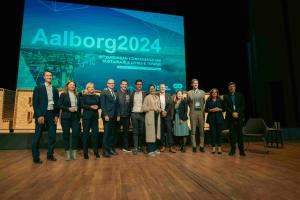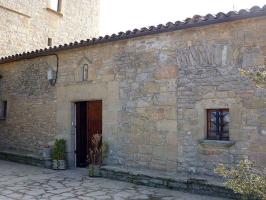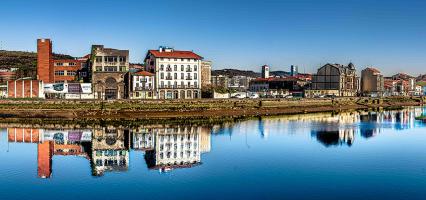Thessaloniki gets ready for its metro launch in November
The underground rapid transit lines have been under construction for almost two decades due to various project delays
 TheMayor.EU logo
TheMayor.EU logo In 2020, the lighting in the whole warehouse district will run on renewable energy
Hamburg’s renowned Speicherstadt is the world’s largest warehouse district. Its buildings stand atop timber foundations, made out of oak logs and was constructed between 1883 and 1927.
In 2009 the city of Hamburg embarked on a major redevelopment effort in the district, aiming to bring it in line with more modern urban visions while at the same time preserving its cultural and historic significance. In 2015, the Speicherstadt was awarded the status of a UNESCO World Heritage Site.
The Speicherstadt is visited by tourists not only for its museums, harbour tours and warehouses, however. Thanks to the efforts of the local non-profit Licht-Kunst-Speicherstadt, founded in 2000 by several organisations including the local government of the city, the warehouse district is also a giant luminous work of art – one that can be witnessed from dusk until midnight.
Now the local lighting is yet again being transformed – this time it will be taking on a somewhat “greener” undertone. Joining in on the city of Hamburg’s overall very ambitious climate goals, the Licht-Kunst-Speicherstadt association has implemented a project that will see 1,500 lights in the historic district-run entirely on renewable energy, thus making the entire area more climate-friendly and in line with the local administration’s ambitions.
Dr. Roland Lappin, Chairman of the Light-Art-Speicherstadt Association and Chief Financial Officer of Hamburger Hafen und Logistik AG is one of the people responsible for the district’s overall years-long transformation. Through the HHLA’s efforts, the Speicherstadt has grown from a historic warehouse district into something much more.
“We started with particularly energy-efficient lights. We have been using energy-efficient, low-maintenance and long-life LED lights for ten years,” stated Dr. Roland Lappin. Following the most recent changes and starting 1 January 2020, the local light art project will also be entirely climate-neutral.
Image by Thomas Wolf, www.foto-tw.de / CC BY-SA 3.0 on Wikimedia Commons

The underground rapid transit lines have been under construction for almost two decades due to various project delays

Now you can get your wine in Talence by paying directly in Bitcoin

That’s because the state has to spend money on updating the railway infrastructure rather than subsidizing the cost of the popular pass

Rethinking renewable energy sources for the urban landscape

The examples, compiled by Beyond Fossil Fuels, can inform and inspire communities and entrepreneurs that still feel trepidation at the prospect of energy transition

Now you can get your wine in Talence by paying directly in Bitcoin

The 10th European Conference on Sustainable Cities and Towns (ESCT) sets the stage for stronger cooperation between the EU, national and local level to fast track Europe's transition to climate neutrality.

At least, that’s the promise made by the mayor of Paris, Anne Hidalgo

The underground rapid transit lines have been under construction for almost two decades due to various project delays

At least, that’s the promise made by the mayor of Paris, Anne Hidalgo

Hostal de Pinós is located in the geographical centre of the autonomous region

Despite its church-y name, the district has long been known as the hangout spot for the artsy crowds

Urban dwellers across the EU are having a say in making their surroundings friendlier to people and the environment.

Forests in the EU can help green the European construction industry and bolster a continent-wide push for architectural improvements.

Apply by 10 November and do your part for the transformation of European public spaces

An interview with the Mayor of a Polish city that seeks to reinvent itself

An interview with the newly elected ICLEI President and Mayor of Malmö

A conversation with the Mayor of Lisbon about the spirit and dimensions of innovation present in the Portuguese capital














